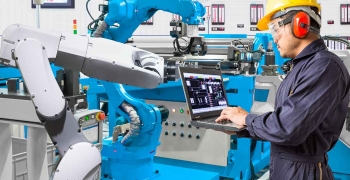Agentic AI: The Transformative AI Enterprises Have Been Waiting For?
Over the past two years, generative AI (Gen AI) tools like ChatGPT have dominated headlines, revolutionizing creative content generation, data summarization, and analytical workflows. From crafting marketing campaigns to distilling complex financial or legal documents, Gen AI has proven its value in back-office functions. However, in the high-stakes, operational world of industries like oil and gas—where uptime, safety, and efficiency are non-negotiable—its impact has been limited. A viral quip, “I want AI to do my household chores while I do art, creative writing & not the other way around,” captures the sentiment that Gen AI excels at assisting rather than acting. For CXOs in the oil and gas sector, this resonates: AI must tackle the heavy lifting of operations, not just generate reports or recommendations. Enter Agentic AI—a paradigm shift promising to bridge this gap by autonomously making decisions, executing tasks, and integrating with physical systems in real time, unlocking unprecedented efficiency, safety, and cost savings.
Agentic AI vs. Generative AI: A Tale of Two Approaches
To grasp Agentic AI’s potential, consider its distinction from Gen AI. Gen AI leverages large language models (LLMs) to produce content—detailed reports, synthetic data, or conceptual designs—based on user prompts. It’s a powerful tool for ideation but requires human intervention to act. Agentic AI, however, builds on LLMs as a reasoning and decision-making engine, enhanced with real-time data integration, planning algorithms, and system interactions (e.g., IoT sensors, robotics, or APIs). While Gen AI generates ideas, Agentic AI executes them, driving operational outcomes with minimal oversight.
Take a simple example: planning a healthy dinner. A Gen AI tool might suggest, “How about a grilled chicken salad with avocado, cherry tomatoes, and a lemon-tahini dressing? Here’s a recipe…”—leaving the execution to you. An Agentic AI, however, analyzes your dietary preferences, location, and real-time data, responding, “I recommend a grilled chicken salad tailored to your low-carb preference. I’ve located fresh ingredients at a Tesco Express 5 minutes from your office in Central London, open until midnight. I can order via Deliveroo for delivery to your hotel by 8 PM and sync a recipe app for preparation. Shall I proceed?” This actionable, integrated approach sets Agentic AI apart.
In an oil and gas context, consider optimizing energy usage in a refinery. A Gen AI system might propose, “Reduce HVAC usage during low-production hours and shift high-energy processes to off-peak times, such as 2 AM to 5 AM, when electricity rates are lower.” An Agentic AI, however, takes control. It integrates with SCADA systems, analyzes real-time sensor data, weather forecasts, and energy pricing, and executes: “I’ve optimized your refinery’s energy consumption. I’ll reduce HVAC usage by 15% during low-production hours (10 PM-6 AM) and reschedule crude distillation unit operations to off-peak hours (2 AM-5 AM), saving 12% on energy costs. Using edge computing to address data latency, I’ll monitor performance daily, mitigating model drift with fresh data. Expected savings: $150,000 this week, based on a Gulf Coast refinery pilot [Ref: SPE-2024-1234]. Would you like a detailed report?” This autonomy directly impacts the bottom line.
Why Agentic AI Matters for Oil and Gas CXOs
The oil and gas industry operates in a complex, high-risk environment where downtime, safety incidents, and inefficiencies can cost millions. Agentic AI addresses these challenges by transforming operations at scale. Early pilot programs highlight its potential:
• Real-Time Reservoir Management: Agentic AI optimizes reservoir performance by integrating seismic data, well logs, and production history in real time. In a North Sea field, Equinor’s pilot increased recovery rates by 10% while cutting operational costs by $5 million annually [Ref: Equinor 2024 Annual Report].
• Pipeline Integrity and Leak Detection: It enhances safety by analyzing sensor, drone, and satellite data to detect anomalies, autonomously dispatching maintenance crews to prevent leaks. A Kinder Morgan deployment along a 500-mile Permian Basin pipeline reduced leak incidents by 30% and saved $3 million in repairs [Ref: Pipeline Tech Journal, 2024].
• Cross-Value Chain Optimization via Integrated Operations Centers (IOCs): Agentic AI powers IOCs by syncing upstream, midstream, and downstream operations. In the Gulf of Mexico, an IOC reduced supply chain costs by 15% and improved on-time delivery by 20% [Ref: SPE-2023-5678].
• Preventive Maintenance: By monitoring equipment health, it predicts failures and schedules maintenance, ordering parts and coordinating crews. A Saudi Aramco pilot in a Middle Eastern refinery cut unplanned downtime by 25%, saving $10 million annually [Ref: Saudi Aramco 2024 Report].
• Emissions Control and Energy Transition: It optimizes processes to lower carbon emissions, adjusting flare gas recovery systems to reduce flaring by 20%. A TotalEnergies project in Europe lowered its carbon footprint by 15%, saving $2 million in carbon credits [Ref: TotalEnergies ESG Report 2024].
The Road Ahead: Challenges and Considerations
While Agentic AI holds immense promise, its adoption faces hurdles. Integrating it with legacy systems like SCADA or ERP requires significant investment and expertise, often taking 12-18 months. Technical challenges include data latency in remote operations, necessitating edge computing, and model drift, where performance degrades over time due to changing conditions. A phased approach mitigates these risks:
• Pilot Phase: Start with a controlled deployment, such as predictive maintenance for a refinery unit or pipeline segment. An oil major’s Caspian Sea pilot began with an offshore platform, achieving a 15% downtime reduction before scaling.
• Scale-Up Phase: Expand to additional assets, resolving data compatibility and latency issues. Another oil major’s Permian Basin deployment scaled from a 50-mile to a 300-mile pipeline network, cutting leak incidents by 25%.
• Full Deployment Phase: Roll out enterprise-wide with continuous monitoring, using sandbox testing, parallel systems, and cross-functional teams to ensure seamless integration.
Regulatory compliance is critical, with frameworks like GDPR, OSHA, and NORSOK demanding oversight of autonomous decisions impacting plant shutdowns or emissions. Safety and accountability are also key—when Agentic AI adjusts a valve, who is liable if a pressure surge occurs? Clear human-in-the-loop protocols, automated safety thresholds (e.g., maximum pressure of 500 psi), redundant manual controls, and real-time alerts are essential fail-safes.
CXOs should monitor advancements in AI transparency and cybersecurity to protect interconnected systems. Partnering with vendors offering modular, compliant solutions can accelerate adoption while managing risks.
Time to Seize the Agentic AI Opportunity Now
The time to act is now, with a phased approach. Industrial IoT once promised to revolutionize oil and gas with connected systems but struggled due to limited processing power, fragmented data, and slow networks. Today, advanced GPU processing, evolved LLM models, widespread 5G, and affordable sensors create a perfect storm for Agentic AI. These technologies enable real-time analysis and action, turning IoT’s promise into reality—whether optimizing reservoirs, preventing leaks, or reducing emissions.
The foundation lies in robust engineering digital data platforms, ensuring data quality and integrity. These must include digital twins for real-time asset simulation and OT-IT convergence expertise to bridge operational technology (SCADA, sensors) and IT systems. Partnering with system integrator service providers in engineering data solutions is key to unlocking long-term value. While Agentic AI is early-stage, with most deployments in pilots, starting with small-scale projects like predictive maintenance can manage risks and build confidence. As it matures, Agentic AI could redefine operational excellence, delivering efficiency and a competitive edge in a volatile, sustainability-driven market.




